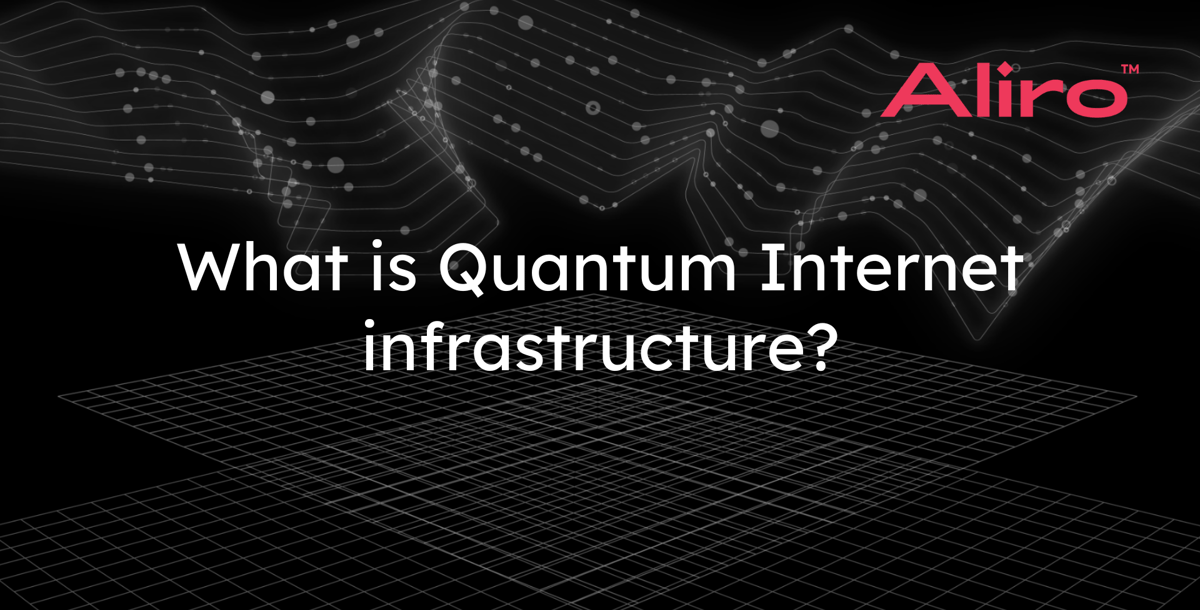
As part of a push to develop U.S. infrastructure, President Joe Biden has recently proposed spending $250 billion on research and development. Included in this plan is the development of "technologies of the future," including quantum technologies. With funding potentially on the way to develop quantum infrastructure, it begs the question what a quantum internet infrastructure would look like.
What is quantum internet infrastructure?
In short, infrastructure for the quantum internet includes both the supply chain to enable scalable development of enabling technologies, such as integrated photonics and quantum interconnects, as well as research and development on key quantum internet components, such as quantum memories and repeaters.
While the recent push by the U.S. federal government would open new directions, efforts to develop an infrastructure for a future quantum internet are already underway.
Quantum internet infrastructure in the US
In 2020, the DOE announced a blueprint for the quantum internet. This blueprint includes a foundation of infrastructure to enable a quantum internet prototype in the next decade. Among the key research directions are the development of enabling technologies as well as research and development into key components. The report cites the National Science and Technology Council Subcommittee on Quantum Information Science recommendations, which list the following key components to be developed:
- Quantum-limited detectors, ultra-low loss optical channels, space-to-ground connections, and classical networking and cybersecurity protocols.
- Entanglement and hyper-entangled state sources and transmission, control, and measurement of quantum states.
- Transducers for quantum sources and signals from optical and telecommunications (telecom) regimes to quantum computer-relevant domains, including microwaves.
- Development of quantum memory buffers and small-scale quantum computers that are compatible with photon-based quantum bits in the optical or telecom wavelengths.
- Long-range entanglement distribution (terrestrial and space-based) using quantum repeaters, allowing entanglement-based protocols between small- and large-scale quantum processors.
The blueprint's vision for a quantum internet infrastructure relies heavily on the DOE's 17 National Laboratories. The DOE refered to the labs as the "backbone" of the U.S. quantum internet. This strategy shows obvious parallels to trends in the early days of the classical internet.
Additional strides towards a quantum internetSeparately, the National Science Foundation (NSF) has taken steps to fund efforts that promise to provide other pieces of a quantum internet infrastructure. The NSF-ERC, the Center for Quantum Networks, is seeking to develop a quantum network testbed, which would provide key infrastructure for researchers developing new components and higher-level protocols. In addition, the NSF Quantum Leap Challenge Institute HQAN is pursuing research that could lead to the development of new enabling technologies and components for networked quantum computers.
What would new funding mean for quantum internet infrastructure?
With these existing projects already underway, what would new funding for quantum internet infrastructure mean? While it's hard to say for sure, we've already seen some signs. Just this year, independent pushes for additional funding for quantum networks have been accelerating. The DOE already announced $25 million in funding for research centers working towards milestones laid out by the blueprint.
To learn more about quantum internet infrastructure and the government funding that is driving key developments, please subscribe to the Aliro newsletter on the footer of this page and receive the latest updates as they happen.
